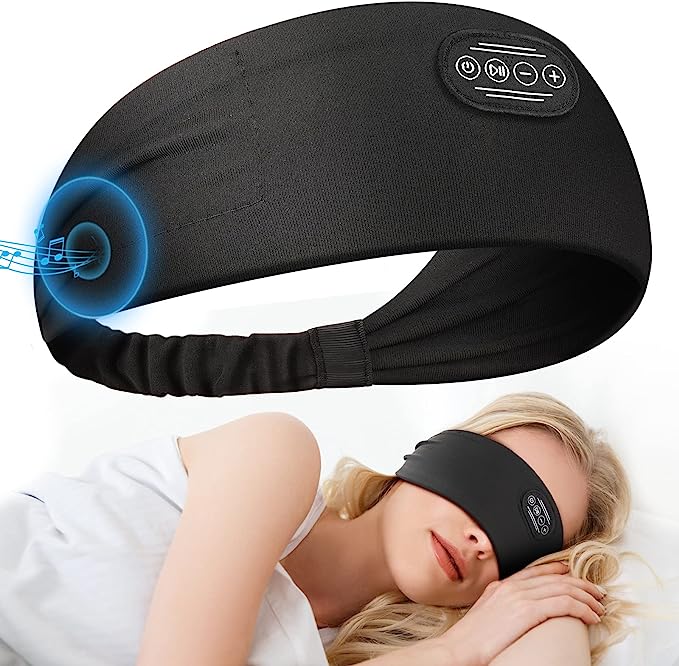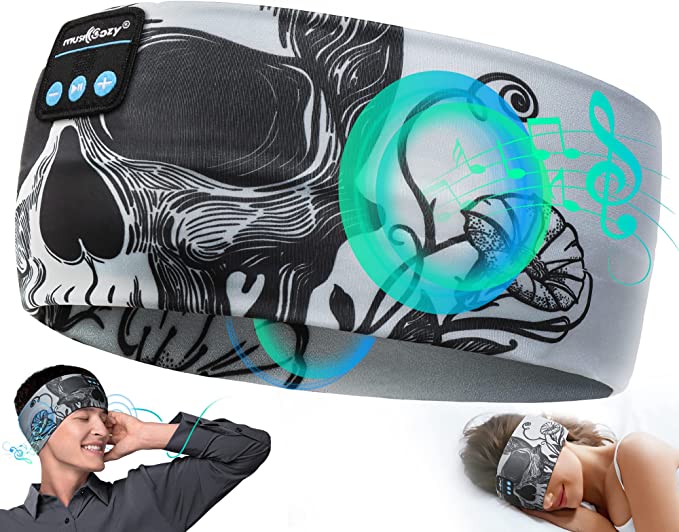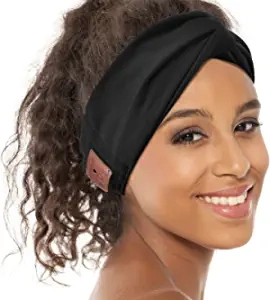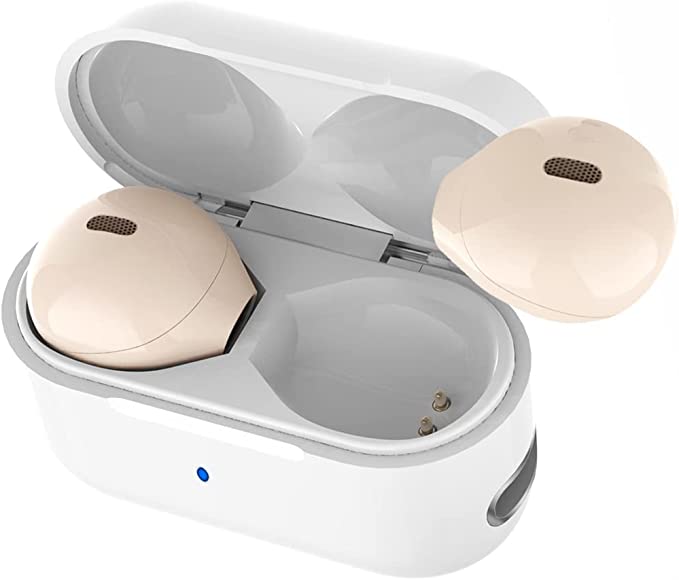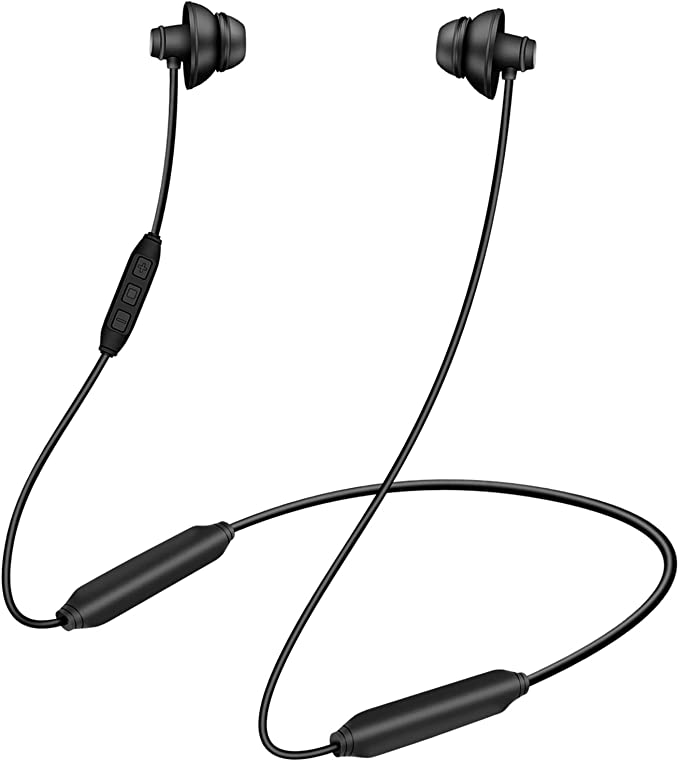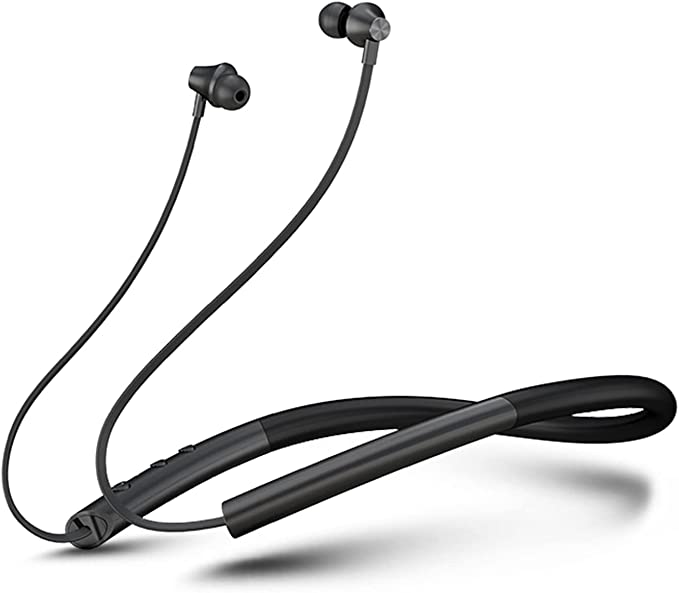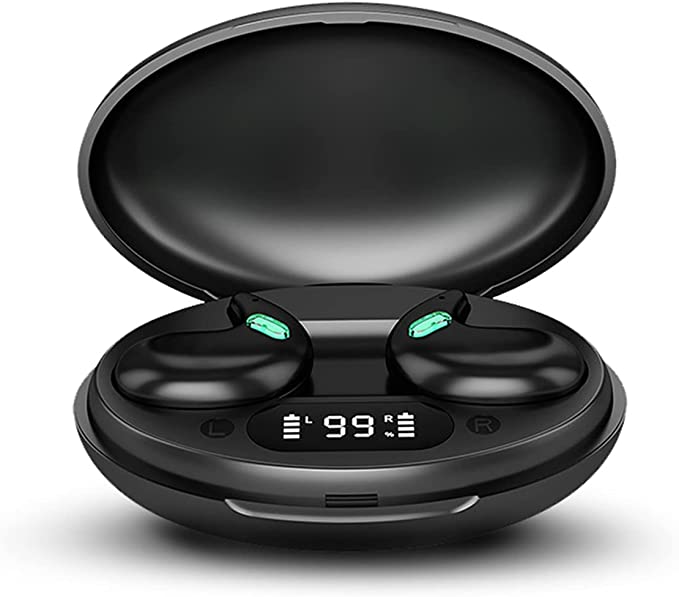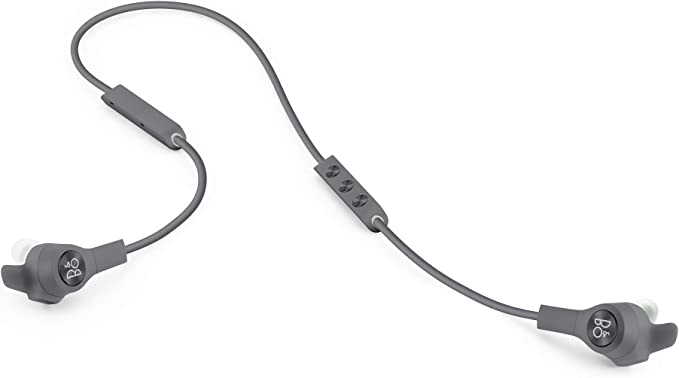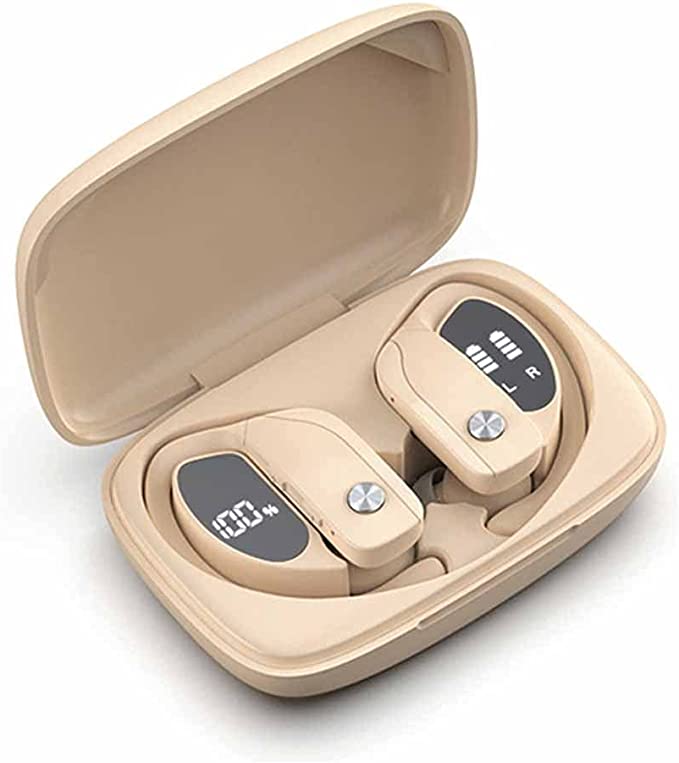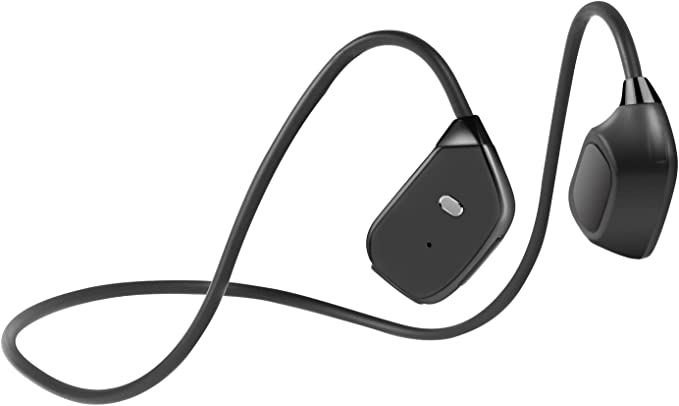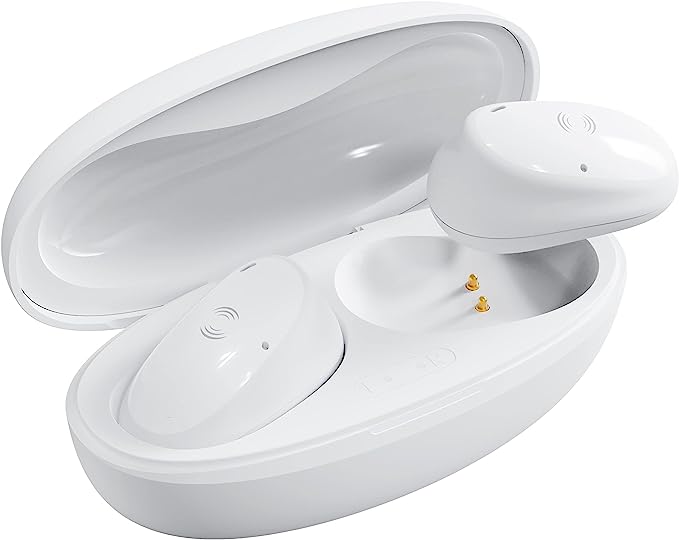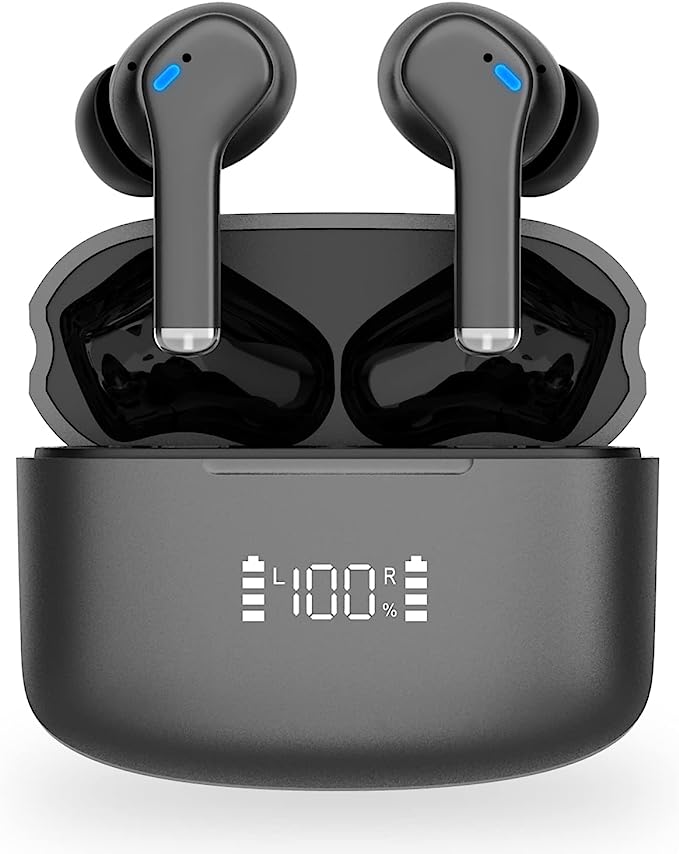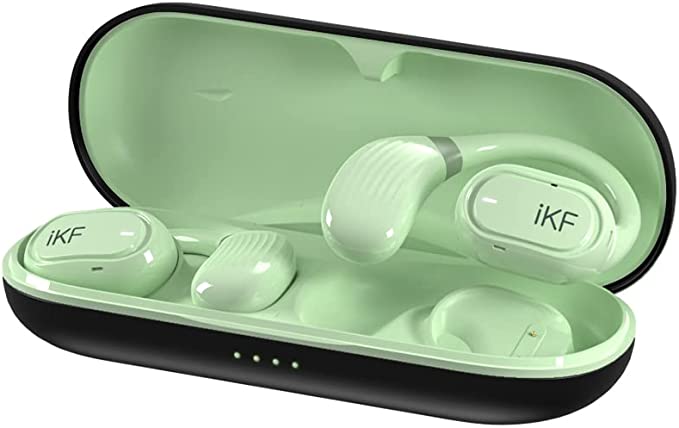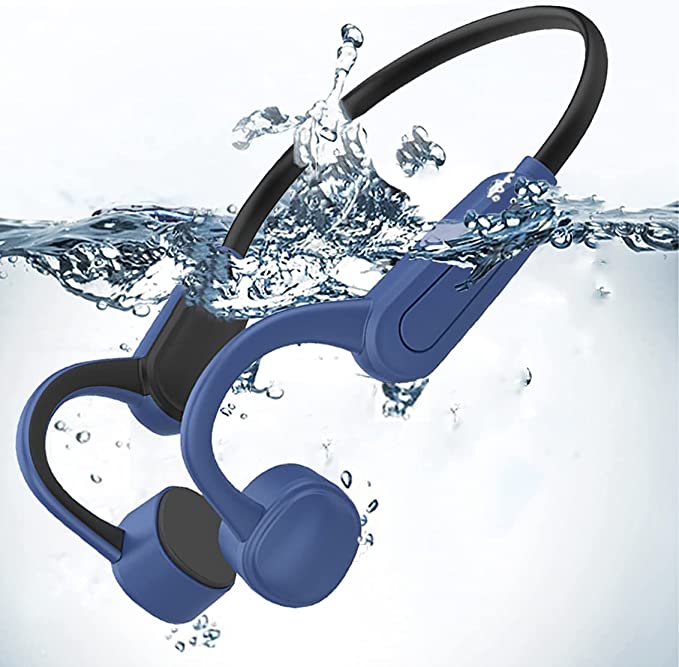MUSICOZY GH01 Sleep Headphones: Your Key to Peaceful Nights & Relaxing Days
Update on March 21, 2025, 1:41 p.m.
We live in a 24/7 society, constantly bombarded with information and demands on our time. Amidst this relentless pace, one crucial aspect of our well-being often gets sacrificed: sleep. From late-night work sessions to the allure of endless streaming entertainment, the modern lifestyle has created a silent epidemic of sleep deprivation, impacting our health, productivity, and overall quality of life. It’s not just about feeling tired; insufficient sleep has far-reaching consequences, affecting everything from our immune systems to our cognitive functions.

Decoding Sleep: The Science of Rest
To understand how we can improve our sleep, we first need to understand the intricate processes that occur when we close our eyes. Sleep isn’t a monolithic state; it’s a dynamic cycle composed of distinct stages, each playing a vital role in our physical and mental restoration. Broadly, we categorize sleep into two main types: rapid eye movement (REM) sleep and non-rapid eye movement (NREM) sleep.
NREM sleep is further divided into three stages: N1, N2, and N3. N1 is the lightest stage, a transitional phase between wakefulness and sleep. N2 is a deeper stage where our heart rate slows and body temperature drops. N3, also known as slow-wave sleep, is the deepest and most restorative stage. During N3, our body repairs tissues, builds bone and muscle, and strengthens the immune system.
REM sleep, characterized by rapid eye movements and vivid dreaming, is crucial for cognitive functions like memory consolidation and learning. During a typical night, we cycle through these stages multiple times, with each cycle lasting approximately 90-120 minutes.
The master regulator of our sleep-wake cycle is a hormone called melatonin. Produced by the pineal gland in the brain, melatonin levels rise in the evening, promoting feelings of sleepiness, and decrease in the morning, allowing us to wake up. This delicate hormonal balance is profoundly influenced by two external factors: light and sound.
Exposure to light, especially the blue light emitted by electronic devices, suppresses melatonin production, making it harder to fall asleep and stay asleep. This is why using smartphones or laptops before bed is so detrimental to sleep quality. Conversely, darkness signals the brain to release melatonin, initiating the sleep process.
Sound, too, plays a critical role. Unwanted noise can disrupt sleep at any stage, preventing us from reaching the deep, restorative sleep we need. Even seemingly minor sounds can cause subtle arousals that we may not consciously remember, but which nevertheless fragment our sleep and leave us feeling unrested.

The Limits of Traditional Sleep Aids
For centuries, people have sought ways to improve their sleep. Traditional methods, such as earplugs and eye masks, address the issues of sound and light, respectively, but they often have limitations. Earplugs, while effective at blocking out some noise, can be uncomfortable, especially for side sleepers. They can also fall out during the night, rendering them useless. Eye masks, similarly, can slip off or put uncomfortable pressure on the eyes. Standard headphones, designed for daytime use, are typically bulky and not suitable for wearing while lying down, often pressing uncomfortably against the ears or falling off during sleep.
Introducing a New Approach: Headband Headphones and Sound
Recognizing the limitations of traditional methods, a newer approach to sleep improvement has emerged: headband headphones. These devices combine the light-blocking benefits of an eye mask with the sound-masking or sound-generating capabilities of headphones, all in a comfortable, wearable design. Unlike traditional earbuds or over-ear headphones, headband headphones are specifically designed for sleep, with a focus on comfort and stability throughout the night.
Inside MUSICOZY GH01: Functionality and Technical Detail
The MUSICOZY GH01 is an example of this newer approach. It features a soft, stretchy headband that incorporates both an eye mask and thin, flat speakers positioned over the ears. This design addresses both light and sound, creating a more conducive environment for sleep. The headband is designed to be breathable, minimizing heat buildup and promoting comfort. Let’s delve into its features without resorting to marketing language.
The core functionality of the GH01 lies in its ability to wirelessly connect to a sound source, such as a smartphone, via Bluetooth. This allows the user to play calming music, white noise, audiobooks, or any other audio that helps them relax and fall asleep. The integrated eye mask blocks out ambient light, further enhancing the sleep-promoting environment.

The Bluetooth 5.2 Advantage: Stability, Efficiency, and Sound Quality
The MUSICOZY GH01 utilizes Bluetooth 5.2, the latest iteration of this widely used wireless technology. Compared to earlier versions, Bluetooth 5.2 offers several key advantages:
- Enhanced Connection Stability: Bluetooth 5.2 incorporates features that significantly improve connection reliability, reducing the likelihood of dropouts or interruptions. This is particularly important for sleep headphones, as a sudden disconnection in the middle of the night can be jarring and disruptive.
- Lower Power Consumption: Bluetooth 5.2 is designed to be more energy-efficient, consuming less power than previous versions. While the exact battery life of the MUSICOZY GH01 isn’t specified in the provided information (a crucial detail to obtain), the inherent efficiency of Bluetooth 5.2 contributes to longer playback time on a single charge.
- Reduced Latency: Latency refers to the delay between when an audio signal is sent from the source device and when it is heard through the headphones. Bluetooth 5.2 reduces latency, resulting in a more synchronized and immersive listening experience.
- LE Audio Support: A significant advancement in Bluetooth 5.2 is the introduction of LE Audio. This new standard uses a more efficient codec (LC3) that can deliver better audio quality at lower bitrates compared to the older SBC codec. This translates to improved sound clarity and detail, even at lower power consumption.
Sound and Sleep: Exploring Frequencies and Binaural Beats
The type of sound we listen to before and during sleep can significantly impact our ability to fall asleep and the quality of our rest. Certain frequencies are thought to be more conducive to relaxation and sleep than others.
- White Noise: White noise is a consistent, uniform sound that contains all frequencies at equal intensity. It’s often described as a “shushing” or “static” sound. White noise can be effective at masking disruptive noises, creating a more consistent sound environment that promotes sleep.
- Pink Noise: Pink Noise is similar to white noise, contains all frequencies, but has less intensity on high frequencies. Some research suggests that pink noise may be even more effective than white noise for promoting deep sleep.
- Binaural Beats: Binaural beats are an auditory illusion created when two slightly different frequencies are played separately into each ear. The brain perceives the difference between these frequencies as a third, rhythmic beat. Certain binaural beat frequencies, particularly in the delta (0.5-4 Hz) and theta (4-8 Hz) ranges, are associated with relaxation and sleep. While more research is needed, some studies suggest that listening to binaural beats can help promote slower brainwave activity conducive to sleep.
- ASMR: ASMR (autonomous sensory meridian response) refers to particular audio and visual that triggers, and promotes a calming and soothing sensation.
The MUSICOZY GH01, with its HD stereo speakers, allows users to explore these different types of sound and find what works best for their individual needs.

Comfort by Design: Ergonomics and Material Choice
A crucial aspect of any sleep headphone is comfort. The MUSICOZY GH01’s headband design is intended to address the discomfort often associated with traditional earbuds or over-ear headphones. The soft, stretchy material is designed to fit snugly without feeling too tight, accommodating different head sizes and shapes. The flat speakers are thin enough to minimize pressure on the ears, even for side sleepers. The breathability of the material is also an important consideration, preventing overheating and ensuring a comfortable sleeping experience. However, the exact material composition (e.g., cotton, spandex, polyester blend) is not specified in the available information. This is a crucial detail that should be clarified, as it directly impacts comfort, breathability, and potential allergenicity.
Beyond the Bedroom: Versatile Applications
While primarily designed for sleep, the principles behind headband headphones – combining audio and light blocking – lend themselves to other situations. Travelers, for instance, often face disruptive noise and light on airplanes, trains, or in hotel rooms. The combination of an eye mask and headphones can create a personal oasis of calm, making it easier to rest and arrive at their destination refreshed. The portability of a device like the GH01 is a significant advantage in these scenarios.
Similarly, individuals practicing meditation or mindfulness often seek to minimize external distractions. The light-blocking feature of the headband, coupled with the ability to play calming music or guided meditations, can create a focused and immersive environment conducive to these practices. The absence of bulky earcups or wires adds to the sense of freedom and comfort.
Even for those simply seeking a quiet moment during a busy day, whether it’s a power nap during a lunch break or a few minutes of relaxation before a demanding task, the ability to create a personal soundscape and block out visual distractions can be beneficial.
Understanding Advanced Sleep Issues
While devices like the MUSICOZY GH01 can contribute to a more restful sleep environment, it’s important to acknowledge that they are not a cure-all for serious sleep disorders. Conditions like sleep apnea, characterized by pauses in breathing during sleep, require medical diagnosis and treatment. Similarly, chronic insomnia, often stemming from underlying psychological or physiological factors, may necessitate professional intervention, such as cognitive behavioral therapy for insomnia (CBT-I).
Sleep deprivation, even without a diagnosed disorder, has significant long-term health consequences. It can impair cognitive function, increasing the risk of accidents and errors. It can also weaken the immune system, making individuals more susceptible to illness. Furthermore, chronic sleep deprivation has been linked to an increased risk of chronic diseases like obesity, diabetes, and cardiovascular disease. It’s essential to recognize the profound impact that sleep has on overall health and well-being.
The Future of Sleep Technology
The intersection of sleep and technology is a rapidly evolving field. We are likely to see continued advancements in several areas:
- Smart Sleep Monitoring: Devices that track sleep stages, heart rate variability, and other physiological data with increasing accuracy, providing personalized insights into sleep patterns.
- Personalized Soundscapes: AI-powered systems that adapt audio output in real-time based on an individual’s sleep stage and physiological responses.
- Advanced Noise Cancellation: Technologies that go beyond simple sound masking to actively cancel out disruptive noises.
- Biometric Feedback: Devices that use biofeedback to help users learn to control their physiological state and promote relaxation.
- Integration with Other Health Data: Combining sleep data with information from fitness trackers, smartwatches, and other health monitoring devices to provide a holistic view of well-being.
These advancements hold the potential to revolutionize how we understand and manage sleep, offering more personalized and effective solutions for improving sleep quality.
Conclusion: Prioritizing Rest in a Busy World
In a world that often prioritizes productivity over rest, it’s easy to neglect the fundamental importance of sleep. However, the science is clear: sleep is not a luxury; it’s a biological necessity. It’s essential for physical health, cognitive function, emotional well-being, and overall quality of life. While technology can play a helpful role in creating a more conducive sleep environment, it’s crucial to remember that it’s just one piece of the puzzle. Good sleep hygiene, including maintaining a regular sleep schedule, creating a relaxing bedtime routine, and optimizing the sleep environment, remains paramount. By understanding the science of sleep and utilizing tools that support our natural sleep processes, we can prioritize rest and reap the countless benefits of a well-rested mind and body.

